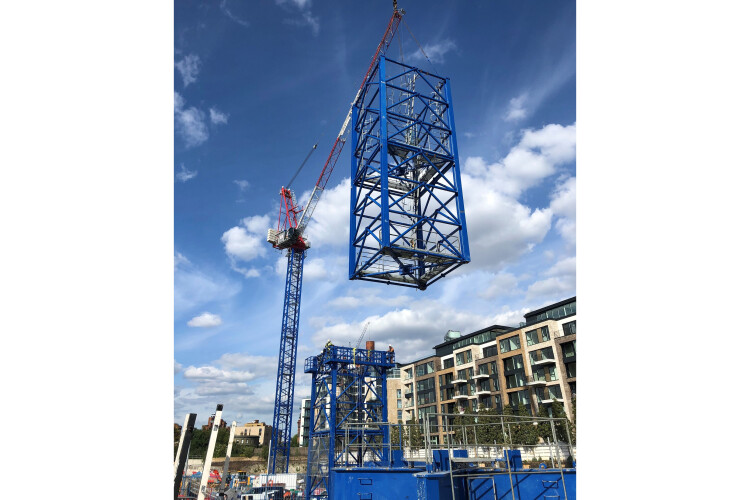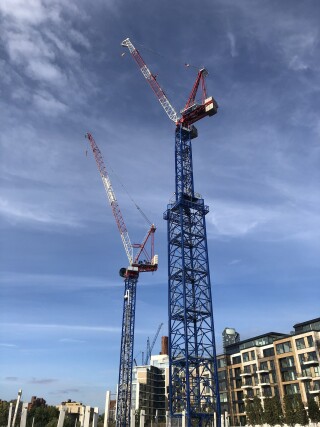Bennett’s Raimondi LR 213 crane is going up at Chelsea Creek in Fulham for a Berkeley/St George housing development. It will stand at 105 metres freestanding – not tied to the building structure.
This will make it the tallest freestanding luffing jib tower crane currently in operation in the UK.
While 105 metres is nothing extraordinary for a crane, it is unusual for a luffing jib crane to remain freestanding at such a height. Typical freestanding luffing jib cranes would be between 30 to 60 metres height for residential developments, Bennetts says, with some occasionally reaching 70 metres or more. But the company knows of none that are operating in the UK freestanding at more than 100 metres.
The first phase of erection took place with the help of a 350 tonne mobile crane at the beginning of May.
The LR 213 currently has a 55-metre mast for the initial construction phase. The final height of 105 metres will be reached later this year as the buildings reach 32 storeys.
Bennetts and its client have ensured the footings of this crane are fit for purpose. Typical tower bases for tower cranes are one or two square metres; the base on this one is s 4.5 square metres, to provide stability for when it reaches its full height. It has also been concreted into the ground.

Edward Seager, managing director of Bennetts Cranes, explains: "When you double the height of a tower crane, the forces don't just double, they square. Further to that, the wind is stronger the higher you go and so, the taller the crane the more force upon it from the wind. The tower that has been installed for this crane is very large, and needs to be extremely strong for the 105-metre mast."
Mr Seager explained that over the last few years there has been a steady trend towards using taller freestanding cranes, driven by changes in cladding systems, which has meant it is difficult to apply cladding while the crane is tied to the building.
"Developers also favour free-standing cranes because they give more flexibility on site, and result in a quicker build time because you don't need to climb the crane and tie it to the building – the cladding can be put on as the building is constructed, rather than waiting for the cranes to be removed."
The LR 213 can lift 14 tonnes at 18-metre radius or 3.3 tonnes at maximum 50-metre reach. It has been joined on site by the LR273, one of Raimondi's newest luffing jib cranes with an 18-tonne maximum load capacity.
Got a story? Email news@theconstructionindex.co.uk




